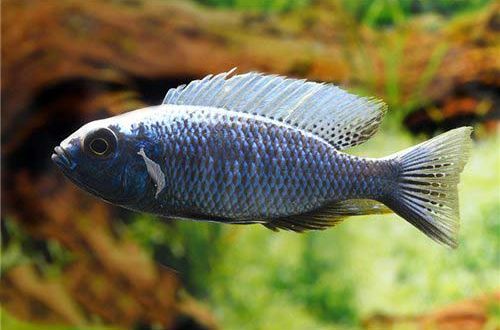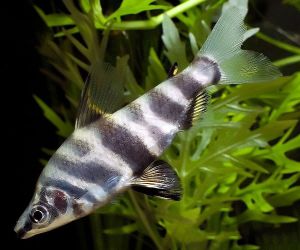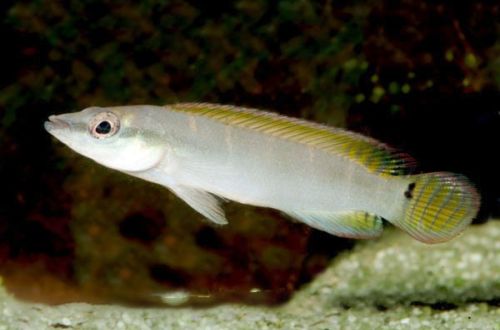
Copadichromis light back
Copadichromis light back, scientific name Copadichromis chrysonotus, belongs to the family Cichlidae (Cichlids). Representative of the Utaka cichlid group. It has a bright blue color and a peaceful disposition. Makes a great addition to the fish community of the Lake Nyasa biotope.

Contents
Habitat
Endemic to Lake Nyasa, one of the largest lakes on the African continent, located in the rift valley on the border between the states of Malawi, Tanzania and Mozambique. Found throughout the lake. Prefers to stay in the upper layers of the water in large flocks near the accumulation of plankton.
Brief information:
- The volume of the aquarium – from 350 liters.
- Temperature – 25-29°C
- Value pH — 7.6–8.5
- Water hardness – medium and high hardness (10-25 dGH)
- Substrate type – sandy, rocky
- Lighting – subdued or moderate
- Brackish water – no
- Water movement – light or moderate
- The size of the fish is about 16 cm.
- Nutrition – any food rich in protein
- Temperament – conditionally peaceful
- Keeping in a harem with one male and several females
Description
Adults reach a length of about 16 cm. Females are somewhat smaller. The main color is blue or blue with faintly visible dark vertical stripes on the sides. Outwardly, it resembles Copadichromis azureus, but unlike it, it has a light back, which is reflected in the name of this species.
Food
The basis of the diet in nature is zooplankton. In the home aquarium, it will accept most popular foods in the form of flakes, granules. Live or frozen invertebrates such as bloodworms, brine shrimp, large daphnia, etc. will be a good addition.
Maintenance and care, arrangement of the aquarium
Light-backed copadichromis needs large open spaces for swimming, so a group of 3-4 fish will need an aquarium from 350-400 liters and a height of 60 cm. At the bottom, heaps of stones are placed, reaching a height up to the middle of the tank, from which caves and grottoes are formed. As an alternative, any design elements that can act as a shelter are suitable. If necessary, females and young fish will find shelter in them during the gestation of eggs.
Lake Nyasa has very high pH and dGH values that are not found in other natural water bodies. Recreating similar water conditions is key to the long-term management of this species.
Aquarium maintenance is standard and consists of a weekly replacement of part of the water with fresh water, removal of organic waste and maintenance of equipment.
Behavior and Compatibility
Peaceful calm fish, if they are in spacious tanks from several thousand liters. In limited spaces with a lack of space, males begin to compete with each other. It is recommended to purchase in a harem-type group, where there will be several females per male.
Compatible with other species capable of living in an alkaline environment with high values of total hardness.
Breeding / breeding
All cichlids of Lake Nyasa are characterized by carrying fertilized eggs in their mouths. Such a mechanism for protecting future offspring has evolved in an extremely competitive environment. In most species, spawning occurs in a kind of nest, which males form at the bottom.
Copadichromis is the only light-backed species in the lake that spawns in the water column. In the process of courtship, the female releases eggs and immediately picks them up until they sink to the bottom. At this point, the male has time to fertilize them.
The incubation period lasts about a month. The fry that have appeared are already large enough and can accept food such as Artemia nauplii, crushed dry flakes and granules.
Fish diseases
The main cause of most diseases is unsuitable conditions of detention. In the event of the first symptoms, it is necessary to check the composition of the water, the diet and the presence of injuries that may result from the aggression of the aquarium neighbors. The detection and elimination of external causes often leads to self-healing, when the body of the fish copes with the disease. However, in some cases, medical treatment will be required, for more details, see the section “Diseases of aquarium fish”.





